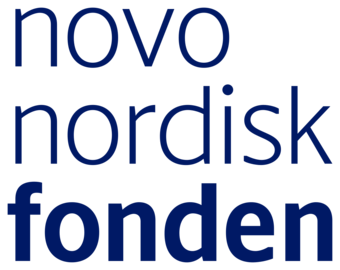Univ.-Prof. Dr. Moritz Grosse-Wentrup

The Research Group Neuroinformatics develops machine learning (ML) and artificial intelligence (AI) algorithms to analyze high-dimensional neuronal dynamics, with a particular focus on methods that reveal causal relationships between neuronal activity, cognition, and behavior [1,2]. These methods are designed to be applicable to a broad range of data modalities and model organisms, ranging from calcium imaging in C. elegans to electroencephalography (EEG) recordings in patient populations. We apply these methods to study disorders of cognition and to develop assistive technologies for patient populations, such as language brain-computer interfaces for post-stroke patients with aphasia.
Focal points of interest
We are particularly interested in understanding how GABAergic neurons contribute to decision-making. In our previous work on neuronal manifold learning [1] and neuro-cognitive multilevel causal modeling [2], we uncovered a low-dimensional structure in the neuronal dynamics of C. elegans that reveals how the behavioral flexibility of these organisms is neuronally coordinated. Building on this work, we intend to develop neuronal manifold and causal structure learning algorithms that differentiate the causal roles of various groups of neurons in general and GABAergic neurons in particular. While we envision our initial developments to build on our work with calcium imaging in C. elegans, we are also interested in extending our focus on decision-making to more complex organisms and other data modalities.
Technical proficiency and instrumentation
The primary expertise of our group is the development of machine learning algorithms for real-time neuronal decoding. As part of this work, we have made significant contributions to the field of interpretable machine learning in general, and to the interpretation of machine learning methods in the context of neuroimaging in particular [3]. For our work on brain-computer interfacing, we maintain an EEG lab equipped with state-of-the-art amplifiers for high-density recordings, along with closed-loop tD/ACS stimulation in virtual reality environments. Importantly, we actively develop and maintain the software stack for real-time neuronal decoding and stimulation.
Aspirations for the next 5 years
Our vision for the next five years is to develop AI methods that can infer from high-dimensional neuronal dynamics which algorithm is implemented by a physical system to transform stimuli into behavior. Significant milestones in this endeavor include the development of a rigorous mathematical framework that formalizes what it means for a physical system to implement a particular algorithm, the creation of AI methods that can test whether a specific algorithm is implemented by a physical system, and an inference algorithm capable of extracting the most granular algorithmic description of a stimulus-to-behavior transformation from a particular set of neuronal recordings.
References
- Kumar, A., Gilra, A., Gonzalez-Soto, M., Meunier, A., & Grosse-Wentrup, M. (2023). BunDLe-Net: Neuronal Manifold Learning Meets Behaviour. bioRxiv, 2023-08.
- Grosse-Wentrup, M., Kumar, A., Meunier, A., & Zimmer, M. (2024). Neuro-Cognitive Multilevel Causal Modeling: A Framework that Bridges the Explanatory Gap between Neuronal Activity and Cognition. PLoS Computational Biology (in press). 10.1371/journal.pcbi.1012674
- Weichwald, S., Meyer, T., Özdenizci, O., Schölkopf, B., Ball, T., & Grosse-Wentrup, M. (2015). Causal interpretation rules for encoding and decoding models in neuroimaging. NeuroImage, 110, 48-59.





